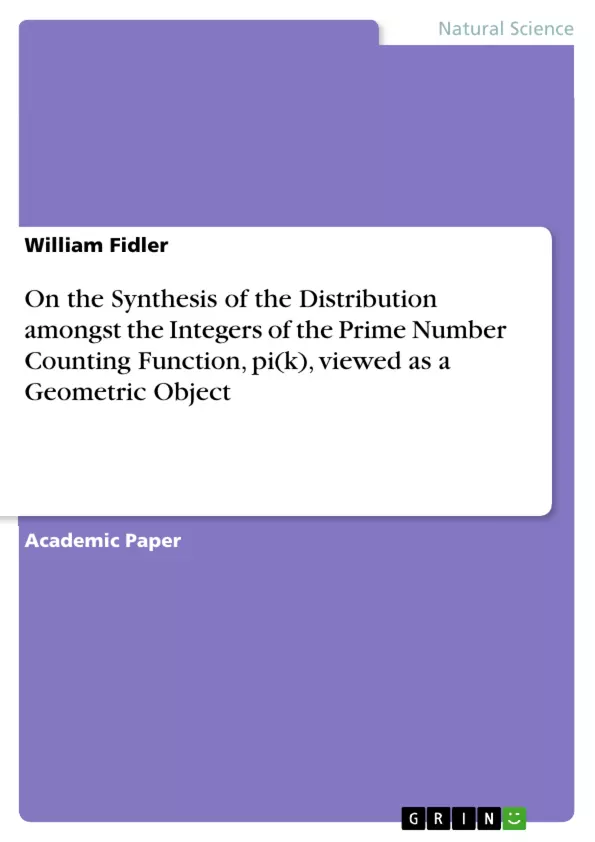A method is devised in which the prime number counting function, pi(k) is viewed as having the properties of a staircase. The terminology appropriate to a staircase is used to describe the parts of the distribution amongst the integers.
Strings of limited extent of consecutive numbers which may contain prime numbers are generated from an iterative equation which contains Gauss' prime number counting function. In honour of Gauss we call these strings of numbers, Gauss strings. , and they are used in the construction of the staircase.
Further, we show that the prime number counting function may be represented in number space by an infinite set of connected trapezia, the individual areas of which are numerically equal to the gap between the primes that are situated on two of the borders of any given trapezium.
Inhaltsverzeichnis (Table of Contents)
- Introduction
- Analysis
- The Gauss string
- The determination of the primality of a number
- The simple geometry associated with a tread
- Discussion
- References
Zielsetzung und Themenschwerpunkte (Objectives and Key Themes)
This paper explores a novel method for visualizing and analyzing the distribution of prime numbers within the set of integers. It introduces the concept of a "staircase" representation of the prime counting function, π(k), where each step represents a prime number. The paper leverages this geometric interpretation to develop a technique for generating strings of consecutive integers that may or may not contain primes. The method utilizes an iterative formula based on Gauss's prime number counting function to construct these strings, known as "Gauss strings." The paper also examines the relationship between the prime number counting function and the geometry of trapezia.
- Visualizing the prime number counting function as a staircase
- Generating "Gauss strings" using an iterative formula
- Determining the primality of numbers within Gauss strings
- Analyzing the geometric properties of the prime number counting function
- Connecting the distribution of prime numbers to the area of trapezia
Zusammenfassung der Kapitel (Chapter Summaries)
The introduction provides context for the paper, highlighting Riemann's influential work on prime number distribution and outlining the limitations of existing methods. The analysis section introduces the novel concept of representing the prime counting function as a staircase and defines key terms related to the staircase model. The chapter on Gauss strings details the iterative formula used to generate these strings and explores their significance in identifying prime numbers. The section on determining primality delves into the process of identifying prime numbers within the constructed Gauss strings. The chapter on geometry discusses the connection between the prime number counting function and the areas of trapezia in number space.
Schlüsselwörter (Keywords)
The paper focuses on prime number distribution, the prime counting function (π(k)), geometric visualization, staircase representation, Gauss strings, iterative formulas, primality testing, trapezia, and the connection between number theory and geometry. It utilizes a novel approach to analyzing prime number distribution and emphasizes the practical applications of the proposed method.
- Quote paper
- William Fidler (Author), 2023, On the Synthesis of the Distribution amongst the Integers of the Prime Number Counting Function, pi(k), viewed as a Geometric Object, Munich, GRIN Verlag, https://www.hausarbeiten.de/document/1336494


